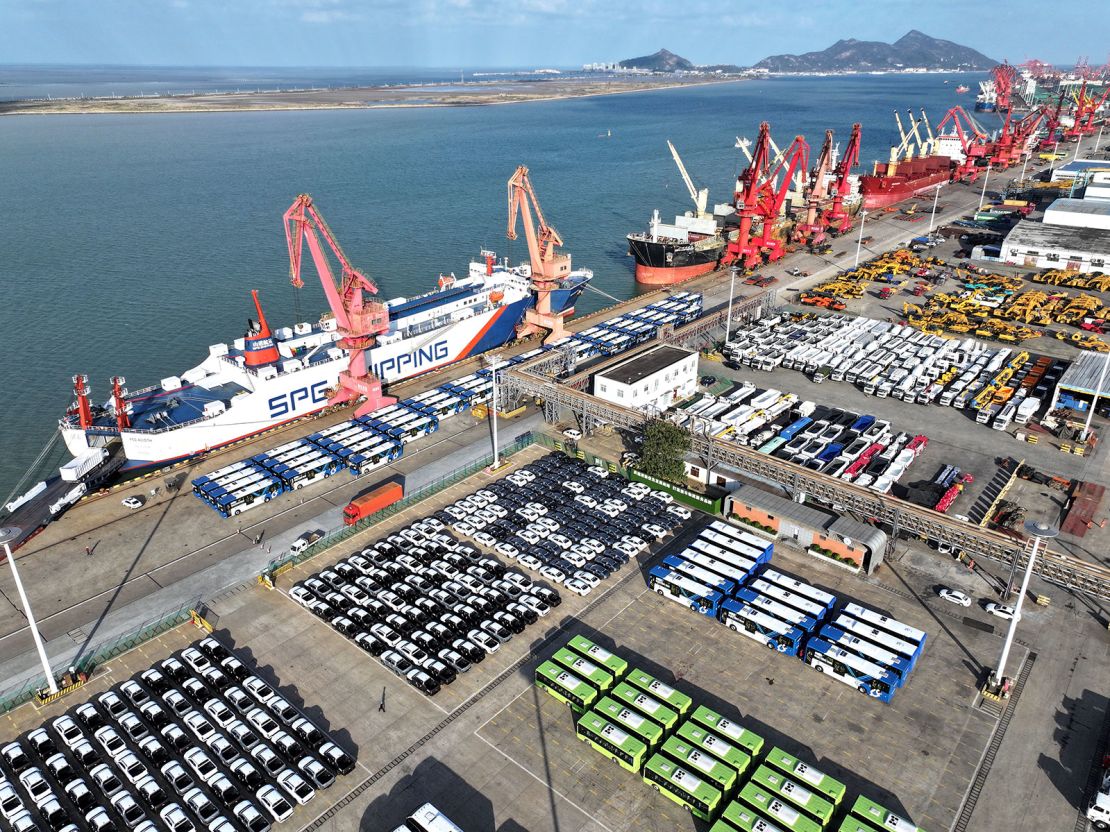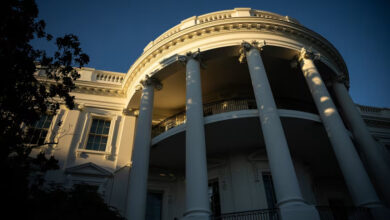
In the summer of 2018, when former President Donald Trump launched a trade war with Beijing, the Chinese economy was riding high. There was even talk it could soon overtake the United States as the world’s largest.
Now, with Trump months away from retaking office, what had appeared to be a juggernaut has been greatly diminished. Contending with property, debt and deflation challenges, China doesn’t look ready for another fight.
But appearances can be deceiving.
Armed with an understanding about the way the president-elect operates, the Chinese leadership is better equipped to deal with the real possibility of Trump making good on his promise to impose upwards of 60 percent tariffs on goods sold to the United States, according to economists and analysts, through a combination of trade diversification, targeted retaliation against US companies and support for domestic consumption.
“China has been preparing for this day for quite some time. The US is much less important to its trade network (than it was before),” said Dexter Roberts, author of the Trade War newsletter and a senior fellow at the Atlantic Council.
In part because of the first trade war which continued under President Joe Biden, Beijing, as well as Chinese companies, have already started actively reducing its trade dependence on the United States. The impact is visible in trade data and has come at warp speed.
As recently as 2022, bilateral trade was at a record high. But last year, Mexico overtook China as the top exporter of goods into the United States, according to the Commerce Department. China had held that perch for 20 years before its exports to the United States fell by 20 percent to $427 billion last year.

Just under 30 percent of China’s exports went to the Group of Seven (G7) rich countries last year, down from 48 percent in 2000, according to Matthews Asia. That’s why, despite selling less to the United States, China’s share of global exports is now at 14 percent, up from 13 percent before the first Trump tariffs.
At a press conference on Friday, Wang Shouwen, international trade negotiator and vice minister of commerce, told reporters: “We have the ability to resolve and resist the impact of external shocks.”
What’s unlikely to be in China’s retaliatory arsenal are the big, showy moves like selling US Treasury bonds (of which China is the world’s second-biggest holder) or a major devaluation of its yuan currency, which has lost 12 percent of its value against the US dollar over the past three years as growth momentum slowed.
“Those dramatic measures wouldn’t help,” Andy Rothman, China strategist at Matthews Asia, told CNN. “The Chinese side typically doesn’t tend to retaliate directly in that way.”
Targeted retaliation
Don’t expect a simple tit-for-tat on tariffs, said Liza Tobin, senior director for economy at the Special Competitive Studies Project, a US think tank. Instead, Beijing’s response will probably be more targeted and asymmetric.
“They’re already squeezing foreign companies operating in China, and they could turn up the heat on American firms, selecting targets they want to push out of the China market anyway,” she said.
In September, Beijing said it was investigating fashion retailer PVH Corp, the owner of Calvin Klein and Tommy Hilfiger, for refusing to source cotton from the Xinjiang region — where Beijing has been accused of carrying out widespread human rights abuses — in a move that could lead to sanctions on an American company with major business interests in China.
Last year, Chinese police raided the Shanghai office of Bain & Company, a US management consultancy, in a development that alarmed the wider American business community.
Shortly after that visit, state media revealed that security authorities had raided multiple offices of international advisory firm Capvision, a consulting firm based in Shanghai and New York.
Reprisals on US firms or agricultural industries would be much more likely than China selling its vast holdings of US Treasury notes in response, say economists, because the market for such bills is deep and liquid, with no shortage of buyers. Selling them could also hurt Beijing’s own interests.
Lowering the value of the yuan currency could also help Chinese exports, if Trump imposes new tariffs, but analysts don’t believe this move is in the cards either.
“Policymakers are unlikely to view a devaluation as being worth the various costs and instead choose other steps,” said Sean Callow, a senior foreign exchange analyst at ITC Markets.
A sudden devaluation in August 2015 generated turmoil in the stock market, he said. In recent months, China’s government has indicated it wants to bolster confidence in its share markets, both for domestic investors and to present China to the world as an attractive destination for investment.
It also wants the yuan to be viewed as a reliable alternative to the US dollar for central bank reserve managers, particularly those rattled by the US and European freezes on Russian assets since 2022, Callow said.
Cleaning house
China isn’t the only target of Trump’s intended tariffs.
He has proposed a 10 percent to 20 percent tariff on all imported goods, a significant increase from the current average of 2 percent or, in many cases, zero. He has also floated 100 percent or 200 percent tariff on cars made in Mexico or on the products made by companies that move manufacturing from the United States to Mexico.
At 60 percent tariffs, a number of economists have calculated that the tax on imports to the United States could cut China’s economic growth rate by half (Trump’s tariff proposals would also cost the typical US household over $2,600 a year, according to a separate analysis from the Peterson Institute.)
But China, a country of 1.4 billion people, also has a huge domestic consumer market it can look to if it plays its cards right.

“The best response to the tariffs that Beijing can make is to get its own house in order, by restoring confidence among Chinese entrepreneurs, who account for 90 percent of urban employment and most innovation,” said Rothman. “This would boost consumer confidence, which would lead to stronger domestic consumption, which would mitigate the impact of weaker exports to the US.”
Last month, the National Bureau of Statistics announced the economy had moderated further in the July to September months, weighed down by weak consumption which was caused in part by ongoing problems in the property market. Gross domestic product grew by 4.6 percent in the three-month period, compared with a year ago. The government is targeting around 5 percent growth.
China’s economy is grappling with a range of problems. After a summer of dismal data, Chinese leader Xi Jinping finally decided to go ahead with a much-needed stimulus package, mostly focused on monetary measures, in the last week of September. Further measures, which disappointed many, were announced earlier this month.
Larry Hu, chief China economist at Macquarie Bank, wrote in a recent research report that bigger moves may have to wait until Trump’s tariffs are announced, which could happen as soon as he takes office in January.
“If exports collapse, policymakers will have no choice but to escalate stimulus to the next level and housing policy will be the key to watch. But history suggests that Beijing tends to react to the actual situation … not preemptively,” he said.




